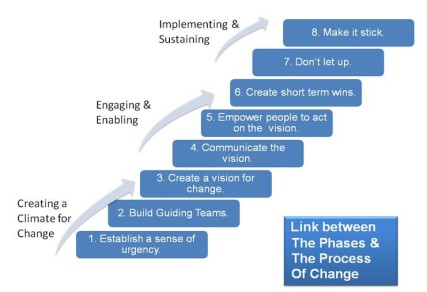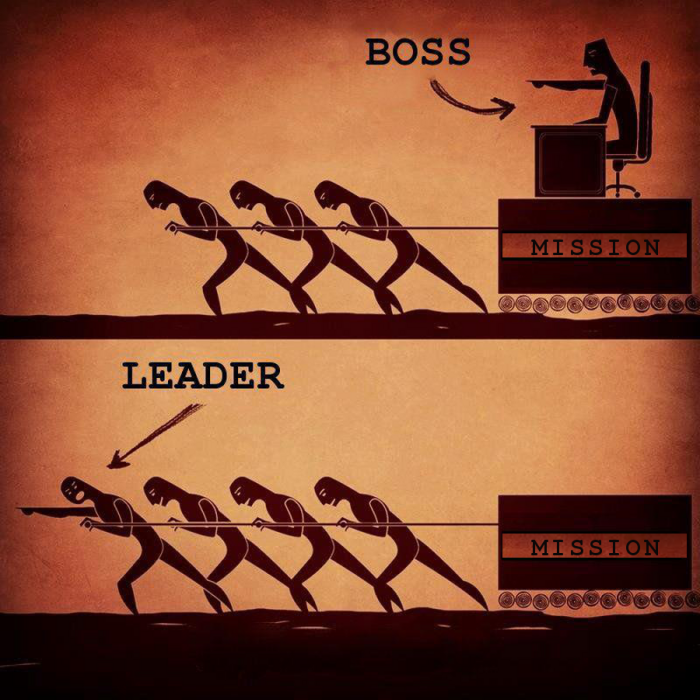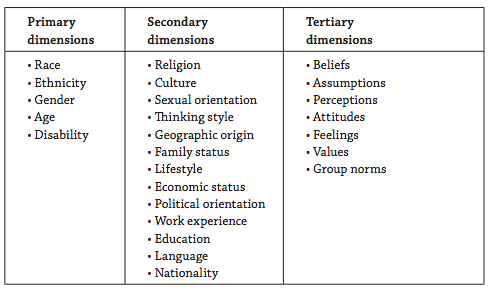
The world is changing, people are moving abroad, organisation are performing world wide, technology is improving day by day, mixture of cultures and values. All these factors affect the management and leadership in any organisation, and all we need is follow the trend other wise we will miss the flight.
There are three main types of change business models:
According t0 Lewin’s change management model: there are three main points that must be go in order to make the change, the first point is Unfreeze: most people make an effort in order to change people, to unfreeze this people there must be motivation or inspiration to be taken in place, this second point after unfreezing is the transition, once the change has taken place, the organisation will be moving into transition period, and it might last for a period of time so suitable leadership have to be there in order to make this transition done , the last point after transition is refreeze, while the change has been implemented so the people inside the organisation should follow the new guideline and be ready for any change (Simms, 2005)
The McKinsey 7s framework model about change provide the organisation understanding and clear statement about the change, guideline for the organisation change, combination of rational and emotional competent, but it has disadvantages as well, because of all parts are together while something changes everything else has to change, and all the differences are ignored.

(Kotter International, 2016)
This model is step-by-step helps the organisation for better clarification and it focusing on implementing and accepting the change, and the transition is easier in this model.
Back in 1981 in UK, British airways announced that new chairman is taking over, he saw things that pervious chairman didn’t see, the organisation is working inefficiently, wasting time, effort, and resources, he decided that the whole organisation has to be restructured, to increase revenue and decrease expenses, he had a vision to change, and he done that by decreasing the workforce in the organisation, what he has done was brilliant, before his announcement he explained the reasons why things needs to layoff to prepare for any upcoming change, and without him we wouldn’t hear of British Airways as a popular organisation nowadays (Troyani, 2014)
Change is important, and if you don’t follow the trend you will fall, that’s what happened to many big organisations and one of them the popular is Nokia, they were moving to slowly and the competitors were taking over, of course all the blame goes to the management because they didn’t follow what’s going on. Their management strategy was to stay stable as long as we are making profit, then what happened is they got it out from the market by the ones who always adapt the changes.
According to all theories that i have stated, there are different approaches for the leaders to use in order to be in the picture of the change. Change is important nowadays in order to be in business, and it only can be done through wise management and good leadership, my recommendation to any organisation is to create great climate of change to the employees by motivation and inspiring them and break all the barriers between the top management and the subordinate in order to make them ready for the change, this is the first process which is the preparation, the second stage is making the guidelines by creating a vision and plan for the change, while the employees are motivated and ready for the change they will adapt the change easily, but it wouldn’t be that easy if they weren’t motivated at the first place. So since they are ready for the change and they have vision the last part is the implementation and stick to it, this stage where the change will take place into the organisation and everyone is ready for it, after the change is implemented everyone must stick to it.
Changing is not an easy task, it acquires patience and effort. everything should be studied and planned in order to complete the task, and it’s also important to follow the trend otherwise everything will fall down.
References:
Simms, H. (2005). Organisational Behaviour and Change Management. [online] Select Knowledg. Available at: https://books.google.co.uk/books?id=CkXp1poaxqIC&pg=PA124&dq=Lewin%E2%80%99s+Change+Management+Model&hl=en&sa=X&ved=0ahUKEwjKuPTSvt7LAhWE1BoKHf5jC6UQ6AEIKjAA#v=onepage&q=Lewin%E2%80%99s%20Change%20Management%20Model&f=false [Accessed 26 Mar. 2016].
Kotter International. (2016). The 8-Step Process for Leading Change – Kotter International. [online] Available at: http://www.kotterinternational.com/the-8-step-process-for-leading-change/ [Accessed 26 Mar. 2016].
Troyani, L. (2014). 3 Examples of Organizational Change and Why They Got It Right. [online] Tinypulse.com. Available at: https://www.tinypulse.com/blog/3-examples-of-organizational-change-and-why-they-got-it-right [Accessed 26 Mar. 2016].


